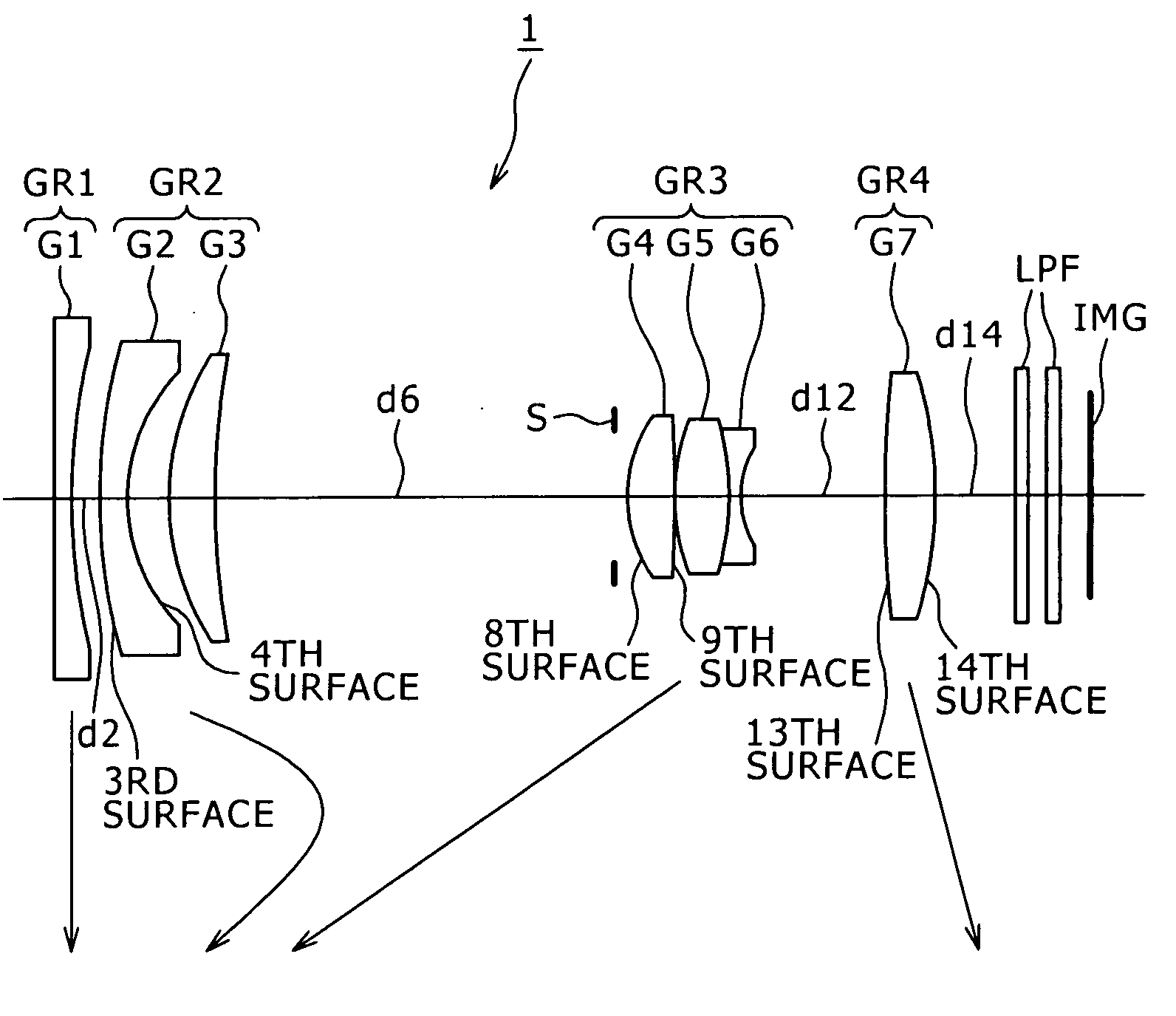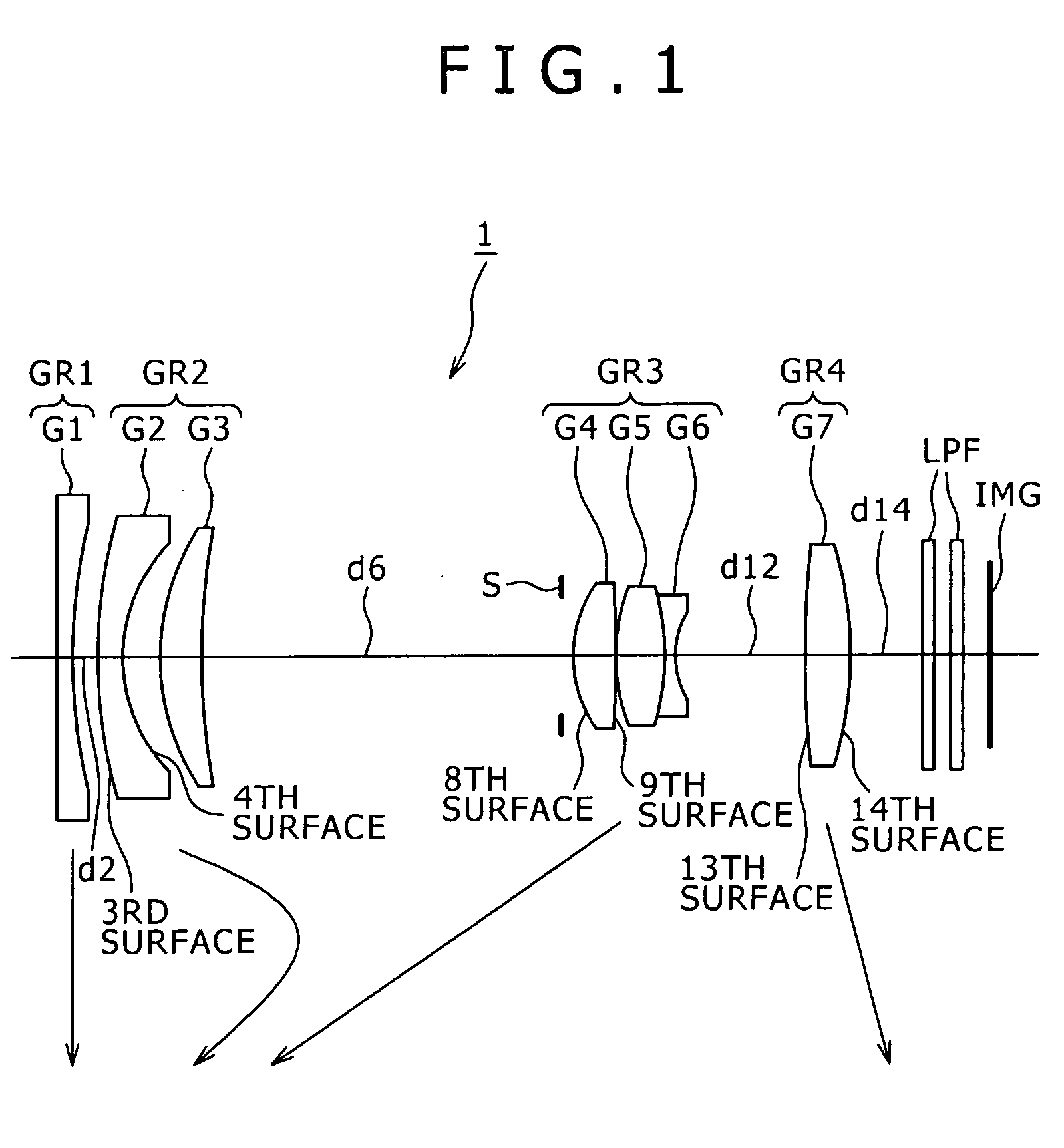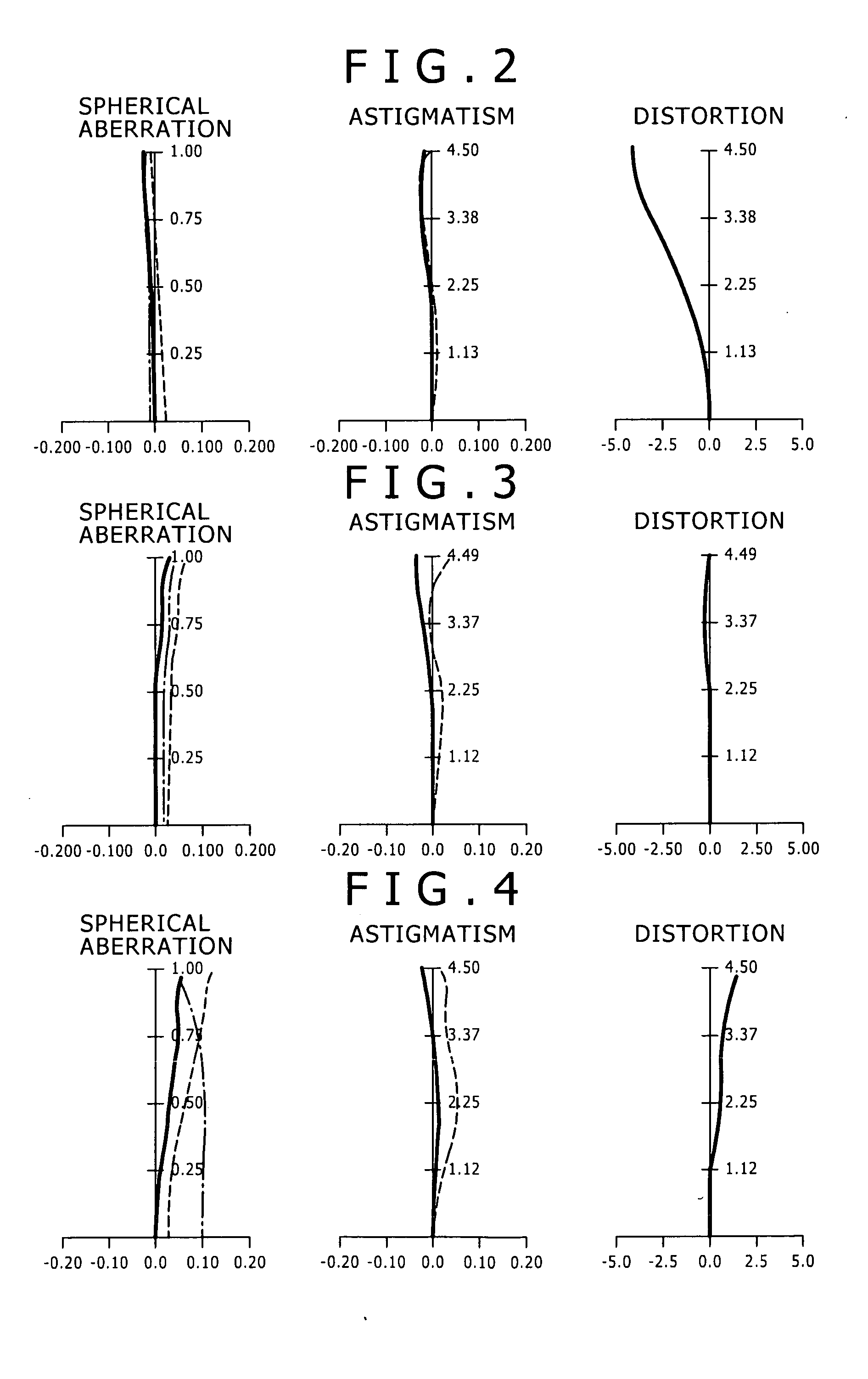Zoom lens and image capture apparatus
- Summary
- Abstract
- Description
- Claims
- Application Information
AI Technical Summary
Benefits of technology
Problems solved by technology
Method used
Image
Examples
first embodiment
[0050]FIG. 1 is a schematic view showing the lens construction of the zoom lens. A zoom lens 1 includes, in the following order from an object side, a first lens group GR1 having negative refractive power, a second lens group GR2 having negative refractive power, a third lens group GR3 having positive refractive power, and a fourth lens group GR4 having positive refractive power. During the power variation of the zoom lens 1 from its wide-angle end state to its telephoto end state, the first lens group GR1 is fixed, the second lens group GR2 temporarily moves toward an image side and then moves toward the object side, the third lens group GR3 moves toward the object side, and the fourth lens group GR4 moves toward the image side.
[0051] The first lens group GR1 is formed with a single negative lens G1. The second lens group GR2 is formed with a negative lens G2 having aspherical surfaces on both sides and a positive lens G3. The third lens group GR3 is formed with a cemented lens inc...
second embodiment
[0056]FIG. 5 is a schematic view showing the lens construction of the zoom lens. A zoom lens 2 includes, in the following order from an object side, the first lens group GR1 having negative refractive power, the second lens group GR2 having negative refractive power, the third lens group GR3 having positive refractive power, and the fourth lens group GR4 having positive refractive power. During the power variation of the zoom lens 2 from its wide-angle end state to its telephoto end state, the first lens group GR1 and the second lens group GR2 temporarily moves toward an image side and then moves toward the object side, the third lens group GR3 moves toward the object side, and the fourth lens group GR4 moves toward the image side.
[0057] The first lens group GR1 is formed with the single negative lens G1. The second lens group GR2 is formed with the negative lens G2 having aspherical surfaces on both sides and the positive lens G3. The third lens group GR3 is formed with a cemented ...
third embodiment
[0062]FIG. 9 is a schematic view showing the lens construction of the zoom lens. A zoom lens 3 includes, in the following order from an object side, the first lens group GR1 having negative refractive power, the second lens group GR2 having negative refractive power, the third lens group GR3 having positive refractive power, and the fourth lens group GR4 having positive refractive power. During the power variation of the zoom lens 3 from its wide-angle end state to its telephoto end state, the first lens group GR1 and the second lens group GR2 temporarily moves toward an image side and then moves toward the object side, the third lens group GR3 moves toward the object side, and the fourth lens group GR4 moves toward the image side.
[0063] The first lens group GR1 is formed with the single negative lens G1. The second lens group GR2 is formed with the negative lens G2 having aspherical surfaces on both sides and the positive lens G3. The third lens group GR3 is formed with a cemented ...
PUM
 Login to View More
Login to View More Abstract
Description
Claims
Application Information
 Login to View More
Login to View More - R&D
- Intellectual Property
- Life Sciences
- Materials
- Tech Scout
- Unparalleled Data Quality
- Higher Quality Content
- 60% Fewer Hallucinations
Browse by: Latest US Patents, China's latest patents, Technical Efficacy Thesaurus, Application Domain, Technology Topic, Popular Technical Reports.
© 2025 PatSnap. All rights reserved.Legal|Privacy policy|Modern Slavery Act Transparency Statement|Sitemap|About US| Contact US: help@patsnap.com



